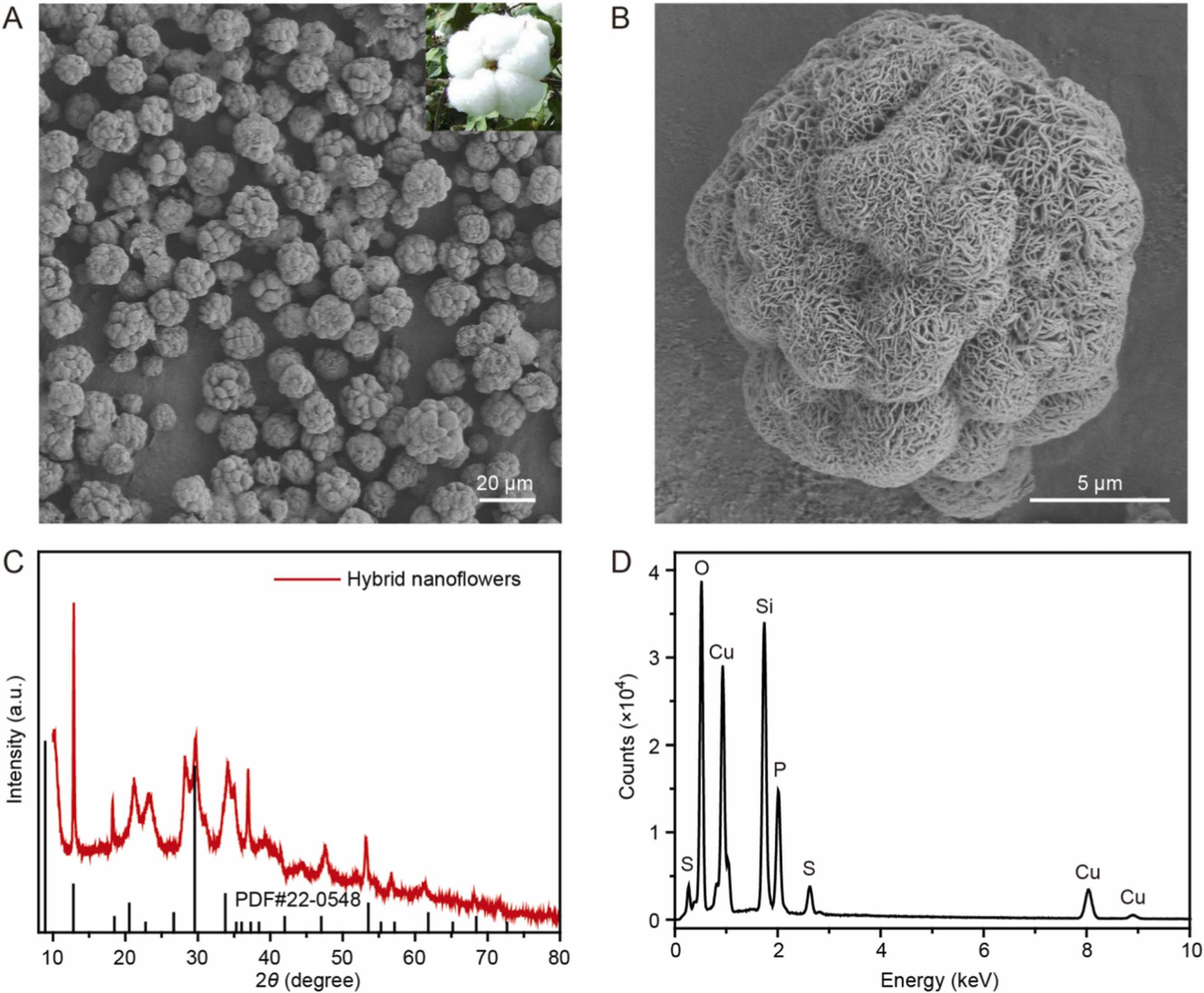Abstract
Staphylococcus aureus is one of the crucial bacterial pathogens that cause food poisoning and human infectious diseases. Therefore, the establishment of a rapid and sensitive detection method for S. aureus is of great significance for the diagnosis, prevention, and control of the diseases caused by this pathogen. To this end, we have established a bio-hybrid nanoarchitectonics of nanoflower-based ELISA method for the detection of S. aureus with high specificity and sensitivity. The core of the method is to prepare a specific cell wall binding domain (CBD)-horseradish peroxidase (HRP)-Cu3(PO4)2 three-in-one organic-inorganic hybrid nanoflower complex through nanoarchitectonics. Detection consists of two main steps: we firstly coated an anti-S. aureus polyclonal antibody into the wells of a 96-well plate to specifically capture S. aureus, and then added customized CBD-HRP-Cu3(PO4)2 organic-inorganic hybrid nanoflower to the system. Due to the high specificity of the CBD from lysin PlyV12 of bacteriophage ϕ1 with S. aureus, a stable antibody-bacterium-hybrid nanoflower complex was formed. Then, the signal amplification of HRP enzyme activity in the hybrid nanoflower was carried out by using the TMB (3,3′,5,5′-tetramethylbenzidine)-hydrogen peroxide reporting system. The method has been proved to be capable of specifically detecting S. aureus ranging from 101 to 106 conoly-forming unit (CFU)/mL linearly with a detection limit down to 6 CFU/mL, which is arguably one of the best for all detection methods reported to date.
